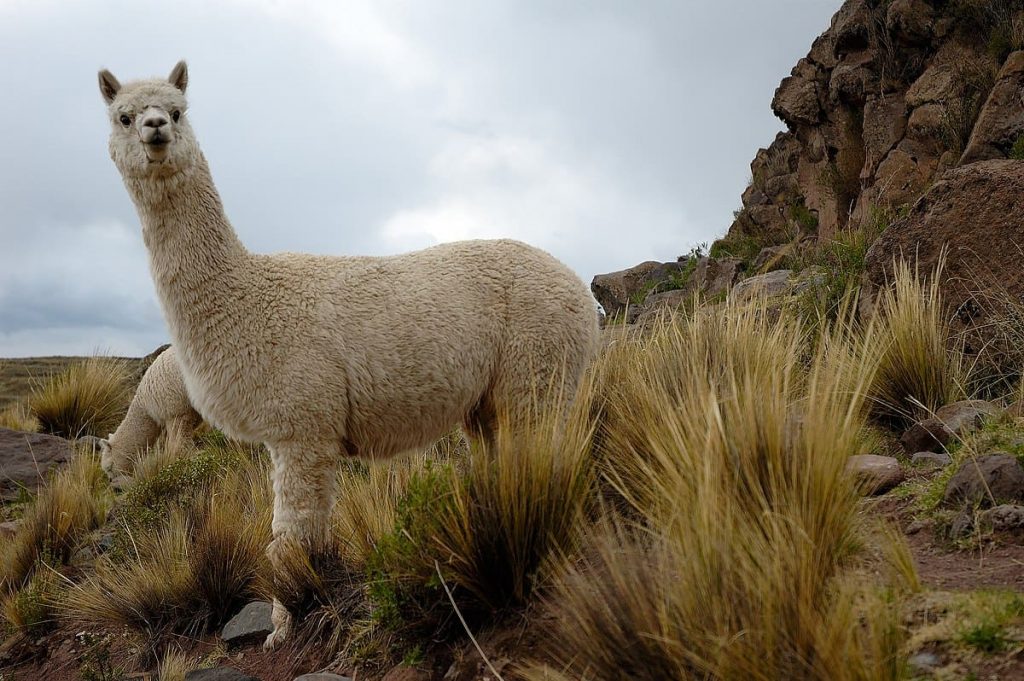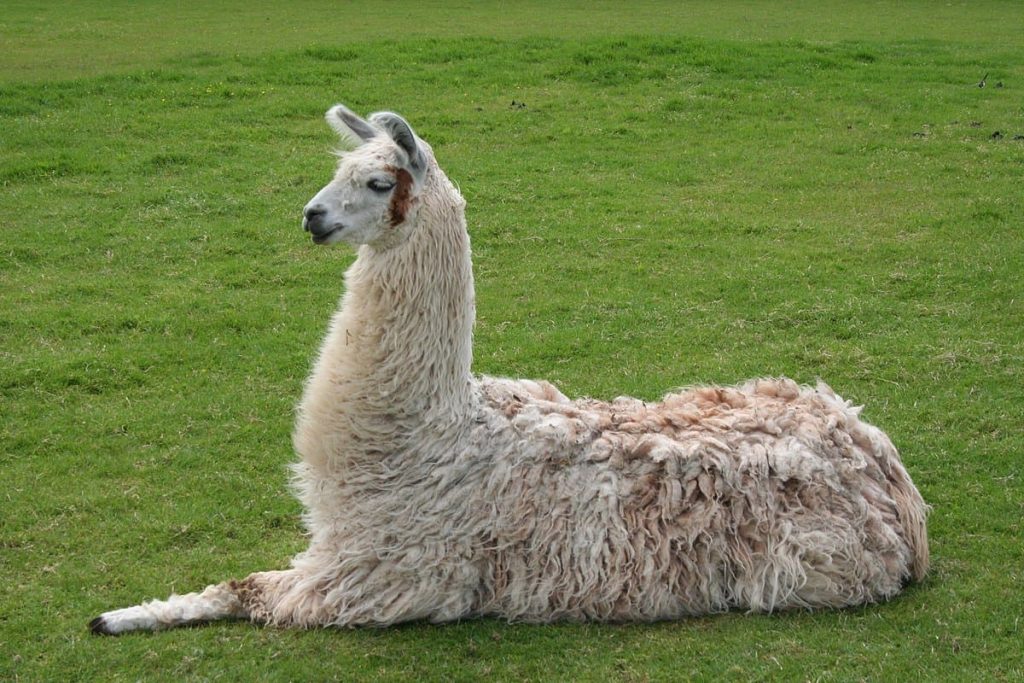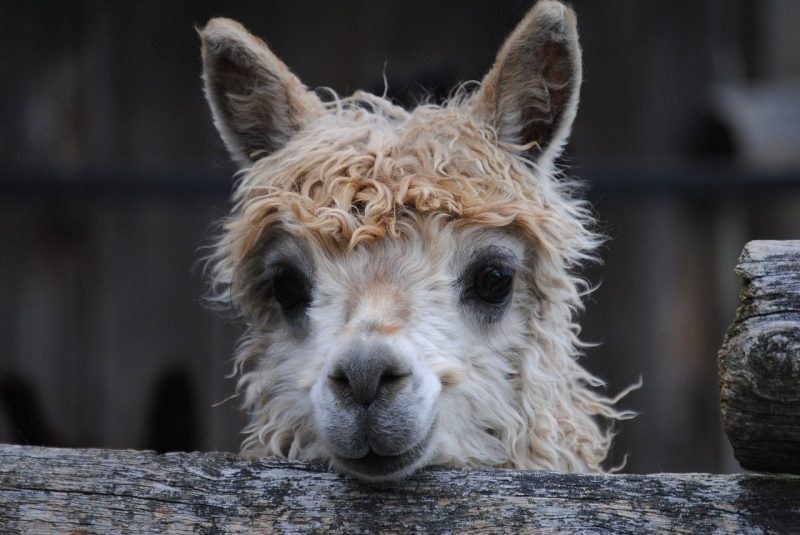Alpaca vs llama is a kind of hoofed mammal and belived to have originated from the Andes in South America. They are listed under the camel family and are popular as one of the calmest animals in the world but primarily differ in their size, their hair, and their face shapes. Here is all you need to know about Alpaca vs llama,
Alpaca vs llama
1.Alpacas
- Alpacas, how many times is it that you have seen posts, gifs and shorts of Alpacas being the most naturally cuddly creatures on our planet. These mushy, plushy, and docile mammals primarily found in Peru and Bolivia have been domesticated from their wild relatives, the Vicuna and Guanaco that live high in the Andes mountain range.
- While Alpacas are domesticated versions of Vicunas, its close relative llamas are domesticated versions of Guanacos. The former is used for fleece production due to its soft wool while the latter is used as a pack animal.
- You would be surprised to know that all Alpacas are domesticated and none of them is found in the wild, even though they are primarily found in South America. The furry miniature hybrid camel has been exported all around the world including the US, New Zealand, Australia, and the Netherlands.
- Belonging to the camel family, this walking cushion has an average height of 3ft at the shoulder and about 4-7 feet long weighing about 55 to 65 kilograms.
- Alpacas are extremely social as one might expect from their warm outlook, but when distressed or threatened these plushy creatures spit. Sometimes on each other to establish dominance.
- Which one might say is the least aggressive or the most ‘Alpaca’ way to do it. Occasionally doing it to humans, only if they have been abused or mistreated.
- A fun fact about these adorable creatures is the sounds these guys make. Alpacas are known to hum. Not only this but they also give out a shriek when they suspect danger is imminent. In case you happen to excite an Alpaca they will start making a ‘wark’ like sound and when it’s time to lock heads with another Alpaca they make a warbling bird-like cry.
- Being herbivores the alpacas generally consume grass and might also include barks, wood and stems. Like other ruminants, the Alpacas also have a 3 chambered stomach for better digestion of roughage. When it comes to eating, the alpacas consume very little (about 907grams for a 57kg Alpaca per day) about 1.5 per cent of their total body weight.
- To add a little icing on the top this plushy mammal exhibits sanitary skills too – all the Alpacas in a herd defecate in the same area like a bathroom to avoid parasitic infections. This is usually showcased by males as the females simply stand in a line and defecate once and together.
- Having a gestation period of 242-345 days the Alpacas are often induced to breed at any time of the year. But in reality, because of their gestation period, and the fact that they give birth to just one offspring, this makes them suitable to breed only once a whole year, and the process of birthing takes several hours.
- A baby Alpaca is called a Cria weighing around 8 to 9kg when it’s born. Weaned at 6 to 8 months, the females are ready to reproduce by 12 to 15 months whereas the males take up to 30 to 36 months to be mature enough to mate.
- Given all these insightful facts about the lovable cute creatures of South America, the Alpacas live up to 20 years.
Also Read: 10 Biggest Animals In The World

Image Source: Wikimedia
2.Llamas
- If you thought Alpacas were the most adorable things you could meet then you might feel elated in learning about its close relative the llama. In fact, they are so befriending in nature that they are used as therapy animals in hospitals and nursing stations and are also called “charismatic megafaunas”
- They are found primarily in Peru and Bolivia.
- The main difference between an Alpaca and a llama is their size, hair, and face shapes as alpacas have small, blunt faces with short ears while llamas have long faces with banana-shaped ears.
- Llamas are the biggest lamoid, being around 5-7ft tall around the shoulder, and weighing about 130 to 200 kilograms. From the top of their heads, they stand around the same height as a human and weigh as much as a lion, gorilla, or a Tiger. This is quite ironic when you consider the warm inviting outlook of a llama.
- They have distinct names such as “studs” or “machos” for males and “dams” or “hembras” for females.
- Castrated males are known as geldings.
- These squishy mammals are primarily used as pack animals as they can carry a solid amount of weight( 45 to 60kg) for quite a stretch ( around 30 km at once). However, when they are overloaded they tend to sit down and not move until the load is reduced.
- Their inner hair is prized for its lanolin-free fur which is used in making clothes, knitting, and handicrafts. The rough or coarse outer hair is used for ropes, rugs, and wall art.
- They have narrow and padded feet which help make commuting along with the mountain ranges easier. Possessing very large long intestines like their distant cousin the camel, the llamas too can go without water for long periods.
- They live in herds and care for other fellow llamas in the herd like a family. They also exhibit a typical social hierarchy where males fight each other to stand at the top of the ladder.
- The fights usually include spitting and knocking each other off-balance which although slightly hilarious fits right into the natural character of these lovable fur babies.
- Just like its close relative the Alpacas, the llamas also communicate via hums and they recognize the vocalizations of every other llama.
- They’re also quite the jumpers.
- In 2017 Caspa earned the title of “highest jumping llama” when he cleared a 1.13-meter hurdle without touching the bar.
- An interesting difference one might note is the fact that although both Alpacas and llamas are quite similar to each other. Alpacas are quite timid, and sometimes the llamas are used as guard animals for maintaining Alpacas and sheep. The male geldings are usually used for this purpose and are introduced into the flocks at around 2 years of age and are effective enough to chase away coyotes and feral dogs. Making llamas not only soft and lovable but also a confident and responsible bunch.
- The diet of a llama mainly consists of Alfalfa hay, corn silage or grass. They consume about 2-4 per cent of their body weight( 10-12 pounds) which is equivalent to feeding a large dog.
- When it comes to mating and their birthing process. Llamas often become pregnant on their first mating as the female releases an egg as and when there’s an external stimulus. Their gestation period lasts around 350 days.
- The newborn baby llamas are called ‘crias’ and they weigh around 9-14 kilograms at birth. They are weaned after 6 months and the females reach sexual maturity at about 12 months. The males aren’t ready until they are about 3 years old.
- Serving a number of wholesome purposes, the llama’s life spans between 15-and 25 years.
- It is also listed as one of the friendliest animals found across the world.
Also Read: All You Need To Know About Hippo vs Rhino

Image Source: Wikimedia
These are the important things you all should know about Alpaca vs llama. Kindly share and do post your comments.











